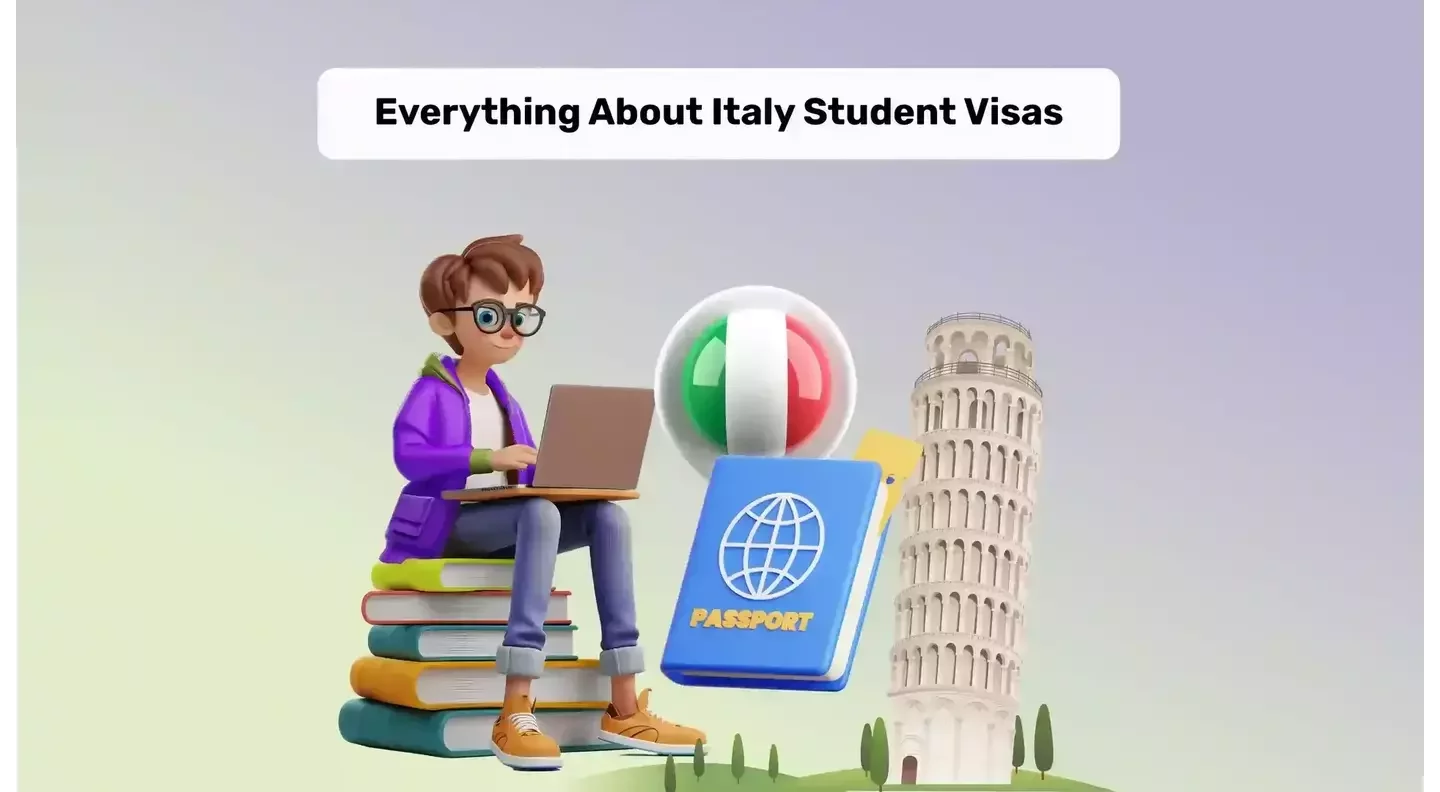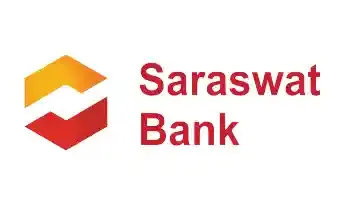Get instant loan offer suitable to your profile !


On this Page:
Planning to apply for an Italy Student Visa? Get answers to FAQs about studying and living in Italy, including costs, language requirements, and more.
Many students feel doubtful while considering Italy as a study-abroad destination. But Italy is known for its high-quality education. Recently, Italian universities have introduced new teaching methodologies while planning to preserve traditional teaching approaches. You can get a testament to the quality of education by witnessing the ranking of the Italian universities. They have ranked among the top 150 in Europe and worldwide in the QS rankings.
Bocconi University, for example, ranks 2nd globally for marketing courses. To make the country more welcoming, around 700 courses are now provided in English. Therefore, if you are looking for prestigious universities for Management, technology, fashion, and more, Italian universities can stand out among the best options worldwide.


There are two types of Italy student visa, which depend on the duration of the course you are applying for. Let's discuss them in detail below:
If you planning to visit Italy for a short-term course lasting less than 90 days, you require an Italy Schengen Student Visa, also called a C-Type short-term visa. The visa process for this category is less complicated and requires fewer formalities. However, this visa comes with restrictions: students cannot work part-time on this visa, must leave the country upon course completion, and cannot extend the visa's validity.
The Italy National Student Visa is for students who are planning to study long-term courses. Some short-term courses also fall into this category if they are not included in the ‘C’ visa type. Known as the ‘D’ type student visa, it has subtypes affecting the number of permitted entries (single-entry, double-entry, or multiple-entry). This visa allows students to work, and after course completion, they may extend their stay if they receive a job offer.
Struggling with Your Admissions?

When applying for an Italy student visa, you must meet the eligibility criteria. These are basic requirements that most students can fulfill:
You should be an Indian citizen; otherwise, the Italian student visa rules may differ, as the criteria differ as the country.
You should have a valid passport with a validity longer than the student visa duration, with at least two blank pages.
An LOA from a reputable and recognized Italian university. You can check the list of recognized universities on the official student visa website.
A clear character certificate is necessary. If you have any pending criminal cases, your visa application will not be accepted.
You must show sufficient funds in your bank account during the visa application process. If you cannot show the required funds to support a one-year stay in Italy, your student visa application may not be approved.

Applying for an Italy student visa requires some documents. Thus, students must arrange all these documents and carefully organize them, as any discrepancies or false information can lead to rejection. Refer to the checklist below for the necessary documents:
Provide a scanned copy of the first page of your passport, where all details are visible. Make sure your name, address, and other information match those on other documents.
Submit two clear passport-sized photographs taken by a professional photographer. Make sure to specify the photo requirements to avoid any errors.
Students must have medical coverage valid in Italy, with a minimum coverage of EUR 30,000, as per visa requirements.
Students applying for the C-type visa should have a round-trip ticket. Long-term visa applicants should provide the planned travel date or week of travel.
An electronic copy of the LOA from the university, which should clearly outline the duration of the course and the fee structure. This document will also help calculate the minimum living expenses for your stay in Italy.
Italy student visa applicants have to submit a language proficiency score in both English and Italian. You have to provide certifications such as CILS, CELI, or PLIDA. For English, submit an IELTS or TOEFL certificate. You can get these certificates from recognized universities, cultural institutions, or certified language schools.
Before submission, ensure that you have self-attested the copies of all documents, with your signature and name clearly visible.
If you are submitting your student visa application within 15 working days of your travel date, you must also provide an additional declaration form.

The process for obtaining an Italian student visa is simple. Follow the steps below to complete your student visa application:
Use the VFS Global portal to fill out the visa application. Confirm the country name twice; otherwise, you will fill in the wrong visa application.
If your course duration exceeds 90 days, apply for the Italy National Student Visa (D-Type). For courses shorter than 90 days, apply for the Schengen Visa (C-Type).
Prepare all required documents for the Italy student visa in digital format and name them clearly for easy upload. Create an account on the visa portal, fill in the application form, and double-check all details before submitting.
You can book an appointment online or offline through the VFS Global portal. Applicants from the northern region are assigned an appointment center, whereas applicants from the southern region can choose from Kolkata and Mumbai based on their preference.
For offline appointments, you can pay the application fee at the center. For online appointments, payment is made during the appointment.
You will receive an email with your appointment date and time. Arrive at least 15 minutes early to complete the process.
Use the tracking number provided to track the progress of your application.
After your application is processed, you will receive an email regarding your passport collection instructions. You must collect your passport in person, and, if unavailable, send an immediate family member on your behalf.

Many students are confused regarding the Italian Embassy in India. Here is the list of the states which are included in the three different centers.
| VACs | Places under coverage |
|---|---|
|
The Embassy of Italy, New Delhi |
Chandigarh, Haryana, Punjab, Rajasthan, Jammu & Kashmir, Himachal Pradesh, Uttar Pradesh, Delhi, and Uttarakhand. |
|
The Consulate General of Italy, Mumbai |
Chhattisgarh, Kerala, Andhra Pradesh, Tamil Nadu, Madhya Pradesh, Goa, Gujarat, Maharashtra, Karnataka, Daman and Diu, Dadra and Nagar Haveli, Lakshadweep and Pondicherry. |
|
The Consulate General of Italy, Kolkata |
Assam, Sikkim, Arunachal Pradesh, Bihar, Jharkhand, Manipur, Nagaland, Orissa, Mizoram, Meghalaya, Tripura, Andaman and Nicobar Islands, West Bengal. |

When you are applying for an Italy student visa and are confused about the amount of money you are required to demonstrate, then refer to this table:
| Expense Type | Estimated Cost (EUR per year) | Description |
|---|---|---|
|
Tuition Fees |
500-4000 |
Varies by university and program (public universities tend to be cheaper) |
|
Rent |
3,600-8,400 |
Range based on shared housing or student dorms; higher in cities like Milan |
|
Electricity, Heating & Water |
600-1200 |
Costs may vary based on usage and season |
|
Internet & Mobile |
300-600 |
Monthly mobile plans range from EUR 10 - EUR 30, internet can be EUR 20 - EUR 30 per month |
|
Public Transportation |
250-350 |
Discounted passes for students vary by city |
|
Groceries & Food |
2,000-3,000 |
Depends on cooking at home vs. dining out |
|
Health Insurance |
150-200 |
Compulsory for non-EU students |
|
Travel Insurance |
100-300 |
Required for certain visa types, varies by provider |
|
Visa Application Fee |
50-116 |
One-time fee at the time of application |
|
Miscellaneous Expenses |
600-1200 |
Includes personal expenses, clothing, leisure activities, etc. |

For many students, the visa interview is the most nerve-wracking part of the application process. Though it lasts only about 15-20 minutes, this interview decides whether you are going to board your dream flight or not. Here are some common questions that can help you with the visa interview preparations.
You should provide clear, genuine reasons for choosing Italy as your study destination. Including statistics, university rankings, and details about the educational institute to strengthen your response.
This question is a trick question. Many students mistakenly respond with “Yes,” which often leads to a rejection, mentioning "Genuine Intent" as a reason. Answer with “No,” focusing on your intention to return to India after completing your studies.
Since Italian is the primary language and can impact your employability, it’s advantageous to show that you have at least a beginner level of Italian. Explain to the officer how you’re working to improve your Italian skills to interact effectively with local and international students.
The visa officer will ask about your sponsor’s financial background to evaluate their ability to support your studies. Be prepared to explain your sponsor’s income and funding sources in detail. Any inconsistencies here could lead to rejection, so ensure you’re well informed about their financial status.

There are several common reasons why your student visa may be rejected. But we have mentioned some important factors below:
If you cannot explain the monetary resources or are unable to show adequate funds to support your education and living expenses in Italy, your student visa application will be rejected.
If you are also stuck with the funds arrangement, then take the help of GyanDhan to get an education loan. Check your Eligibility to make your study abroad dream come true.
Missing any required information or supporting documents may result in visa rejection. Be sure to fill in all details accurately and attach all necessary documents.
If you are unable to show proficiency in the Italian language, it can lead to visa rejection, especially if language requirements are specified.
Attempting to mislead the visa officer with inaccurate or incomplete information will likely result in rejection. Always provide honest, accurate information on your application and during the interview.

Indians and all non-EU citizens are required to apply for a residence permit once they reach Italy. The duration for applying is eight days after arrival, and it must be done without fail. The application for a residence permit has to be done at the local post office, the place of residence in Italy. There is a list of documents one must keep with oneself for applying for the residence permit:






Italy is a fantastic study destination, renowned for its long-standing educational heritage. Even QS rankings provide a testament by ranking La Sapienza - the University of Rome leads in Classical Studies and Ancient History, for the 4th consecutive year. The Politecnico of Milan is placed 7th in Architecture and Art and Design, and 9th in Mechanical and Aeronautical engineering. Bocconi University ranks 2nd in the world in Marketing, while also securing 9th place in Management Economics. These rankings highlight the strong international reputation of Italian universities among the world's leading institutions.


Students need funds of at least INR 30 lakhs, covering both tuition fees and living expenses.
If you live in southern Italy, EUR 1500 per month can be sufficient. However, in northern Italy, EUR 1500 may not cover basic needs.
To apply for permanent residency in Italy, you must meet the income requirements and have held a residence permit for the last 5 years.
A minimum score of 5.5 bands on the IELTS is required to obtain a student visa for Italy.
Top courses in Italy include Management, Fashion, and Architecture.
Yes, if you meet the eligibility criteria, you can switch from a study permit to a work visa.
Italian universities have two intakes: September and February. The September intake is often recommended for Indian students.
Yes, it is possible to live in Italy without knowing Italian; however, it may limit your employability.
Check Your Education Loan Eligibility

Ask from a community of 10K+ peers, alumni and experts
Trending Blogs
Similar Blogs

Network with a community of curious students, just like you
Join our community to make connections, find answers and future roommates.. Join our CommunityCountry-Wise Loans
Best Lenders for Education Loan

ICICI Bank

Axis Bank

Union Bank

Prodigy

Auxilo

Credila

IDFC

InCred

MPower

Avanse

SBI

BOB

Poonawalla

Saraswat